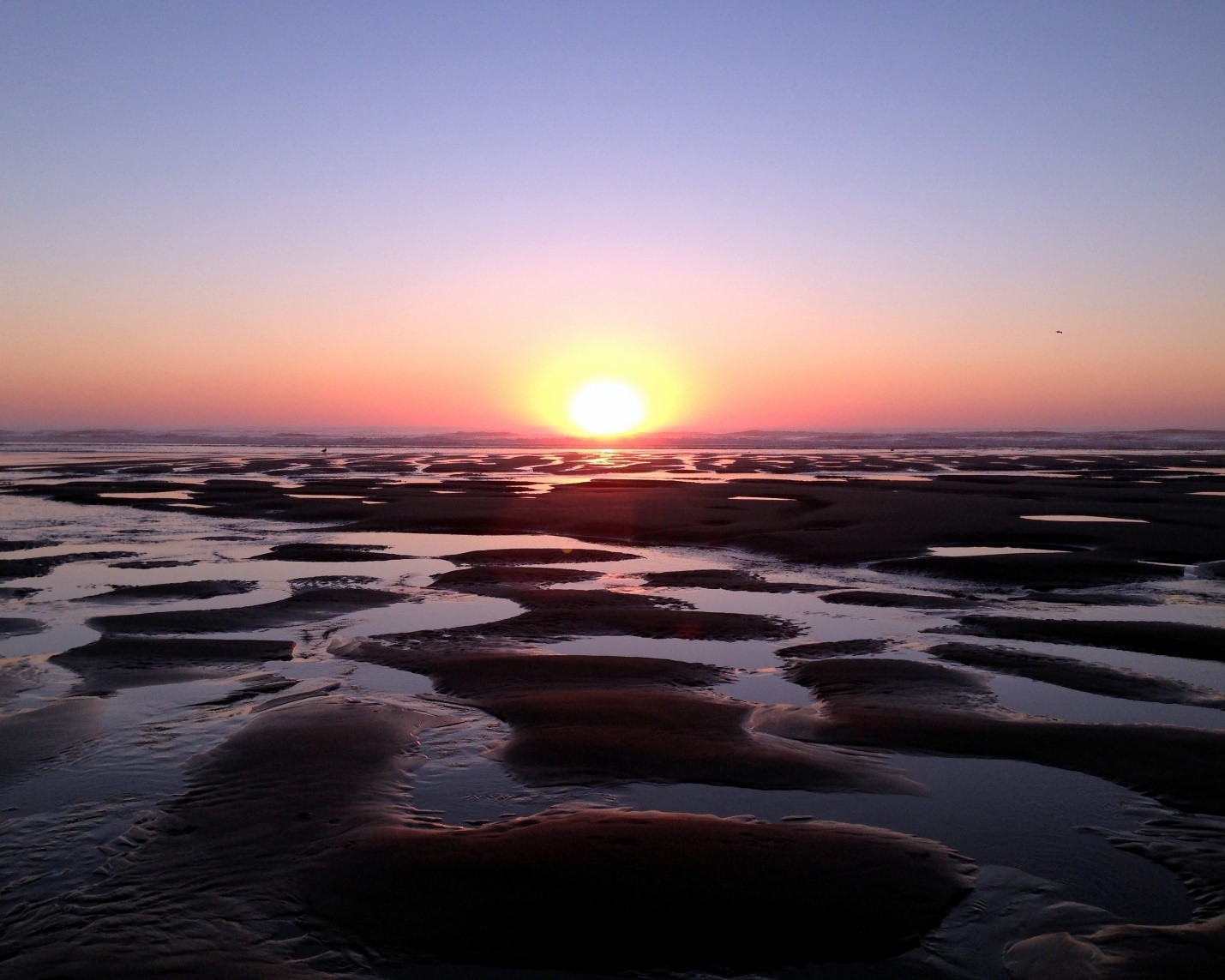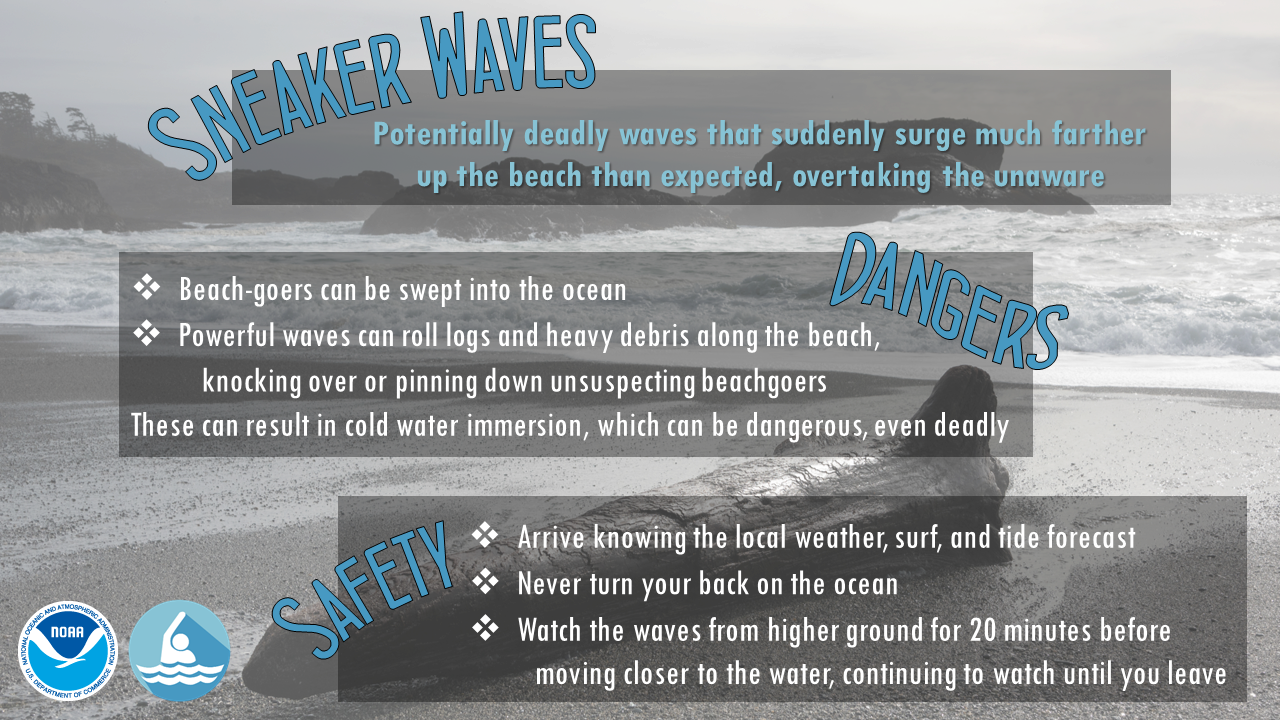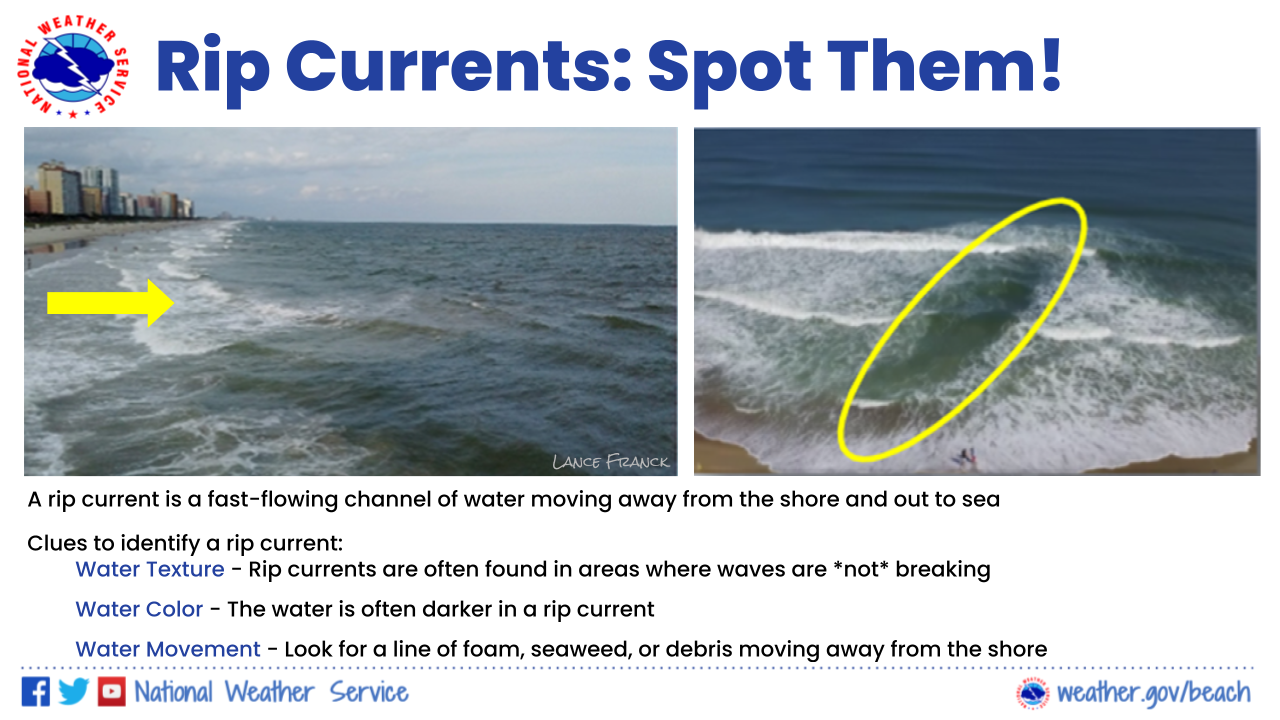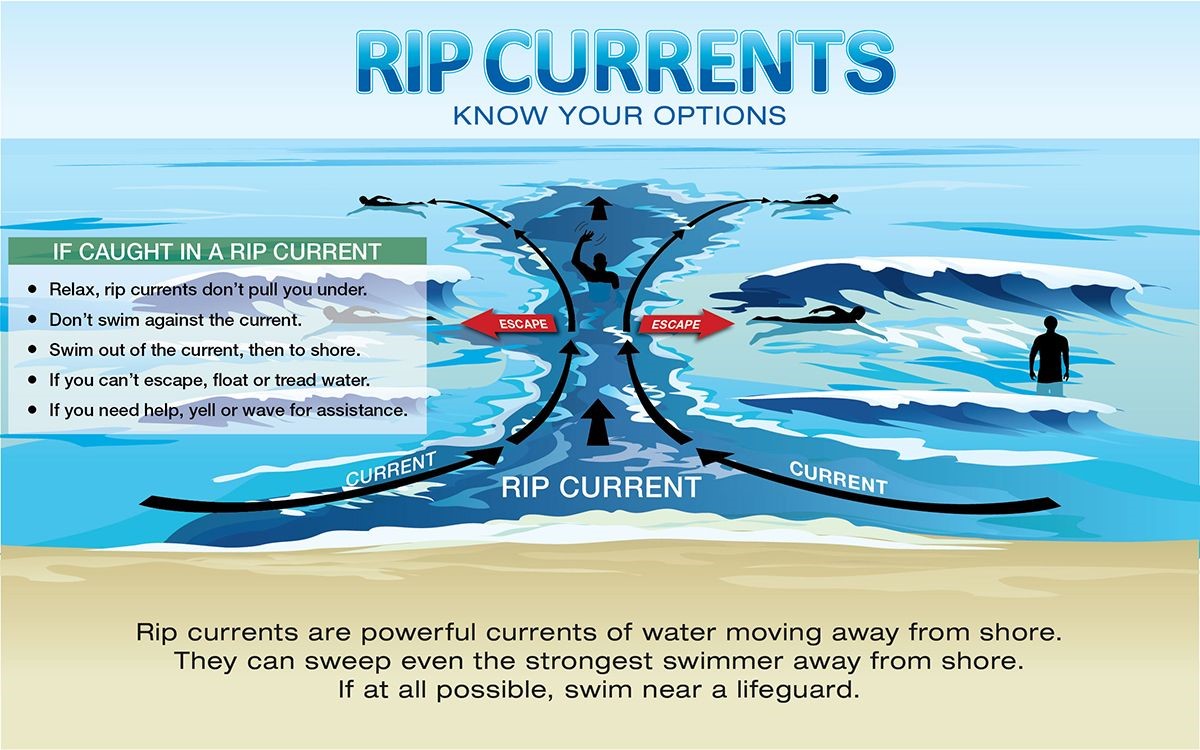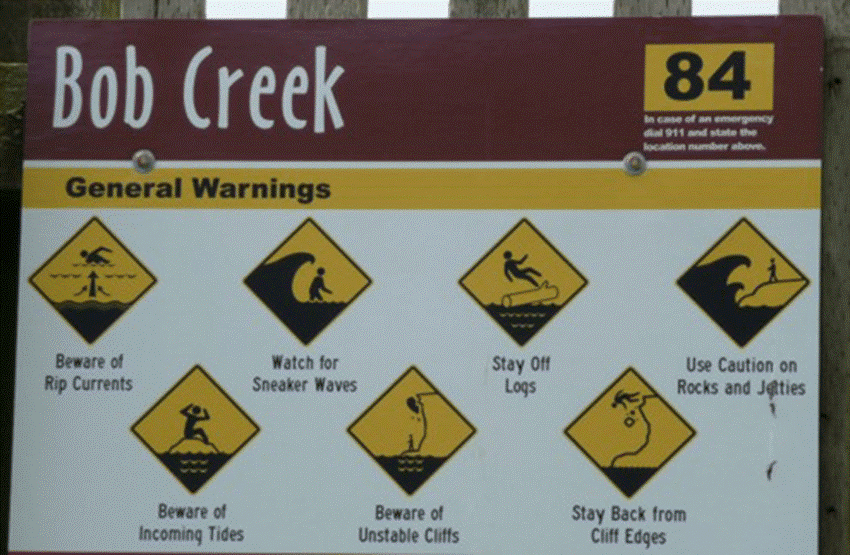Other Hazards
Oregon Coast Beach Hazards
Sneaker Waves: Ocean waves that surge further up the beach than what is typical for the tide.
These often appear smaller than they actually are. These waves can be deadly, sweeping people up into the ocean or rolling them over with logs. Since 1990, sneaker waves have killed at least 21 people along the Oregon Coast, according to The Oregonian.
Figure 2 – Sneaker Wave Infographic, NOAA
Check out these resources for more information about Sneaker Waves:
Rip Currents: Powerful, narrow currents of fast-moving water caused by the breakage of large waves and subsequent rush of water back out to sea.
Rip currents can occur on any beach with waves at any time. Always spend a few minutes watching the ocean before entering, as you may be able to visually identify rip currents and can thus avoid entering the water near one.
To identify a rip current, look for:
-
- A narrow gap of darker, calmer water amongst the incoming white capped waves.
- A break in the incoming wave pattern.
- A channel of churning water flowing out.
- A consistent stream of foam, seaweed, or beach debris flowing outwards.
If caught in one, do not swim against the current. Instead, swim parallel to the beach until you are out of the current, then make your way back to shore.
Check out these resources for more information about rip current identification, hazards, and safety:
Riptides: Powerful ocean currents caused by ebbing tides from an inlet with a barrier beach.
Riptides can also occur at the mouth of a river, in a lagoon, in small bays, in estuaries, and in other similar areas where ocean water funneled. The key difference between a riptide and a rip current is that riptides are associated specifically with the movement of outgoing tidal waters through inlets, common along our rocky Oregon coastline.
Riptides can carry a person further out to sea than a rip current and are much harder to escape as they are typically wider. If caught in a riptide, yell and wave to beachgoers or nearby boats for assistance. Your best safety against riptides is to avoid going into the water at an inlet area, particularly along the inlet’s borders.
Undertows: The fast-moving outflow of water under the ocean’s surface caused by breaking waves.
If caught in an undertow, get your feet underneath you as quickly as possible, stand up, and head towards shore. Though an undertow won’t pull you out to sea (only a few yards), you may get caught tumbling in a cycle of them with potential for injury from slamming against the sand. Undertows are most dangerous for inexperienced swimmers and children.
Stranded Marine Life: When dead or injured marine animals are beached or unable to return to the open ocean. Here are NOAA’s examples of stranded marine life that you should report:
-
- “Whales, dolphins, and porpoises (cetaceans) are considered stranded when they are found dead, either on the beach or floating in the water, or alive on the beach and unable to return to the water.” (NOAA – “Understanding Marine Wildlife Stranding and Response”)
- “Seals and sea lions (pinnipeds) are considered stranded when they are found dead on land or in the water, or are in need of medical attention. Because healthy pinnipeds come on land to rest, expert assessment may be needed to determine if they need help.” (NOAA – “Understanding Marine Wildlife Stranding and Response”)
- “Stranded sea turtles are defined as any ocean turtle found on land or in the water that is dead, injured, or exhibits any indication of ill health or abnormal behavior.” (NOAA – “Understanding Marine Wildlife Stranding and Response”)
If you come across any stranded marine life, maintain a safe distance and do not approach the animal as they may have zoonotic diseases. Report stranded marine life to:
-
- The NOAA West Coast Stranding Hotline: 1-866-767-6114
- The Oregon Marine Mammal Stranding Network South Coast: (541) 270 – 6830
- Please additionally fill out OSU’s Marine Mammal Stranding Report.
Learn more about Marine Wildlife Stranding below:
Beach Safety Tips
Here are a few key safety tips to keep in mind anytime you visit the beach:
- Always check the beach number if you need to call for help. (Beach numbers are typically displayed on a yellow sign near the beach entrance or near other signage)
- Do not enter the ocean if you cannot swim.
- Never swim alone.
- Never turn your back on the ocean.
- Supervise children closely.
- Stay off logs in or below the surf line or wet sand. Waves can easily pick up logs and large debris and trap or crush you under them.
- Stay in shallow water.
- Use sunscreen and drink plenty of water.
- Always check the tides before visiting the beach.
- Obey all posted signs and flags.
Beach Hazard Signs and Flags
You may be familiar with the variety of hazard signs present at beaches along the Oregon Coast. These signs are important public safety notices and should always be obeyed. Below is an example of the general warnings or beach hazard signs you may see along the Oregon Coast.
Figure 5 – General Warnings at Bob Creek Beach near Yachats, Oregon
The Oregon Parks and Recreation Department monitors the water conditions of many popular beaches along the Oregon Coast. There are three types of posted water conditions:
-
- Open – Green Alert, swimming and bathing are permitted.
- Advisory – Yellow Alert, swimming and bathing are not recommended at this time.
- Sewage – Red Alert, sewage spills or major pollution events occurring. Swimming and water contact prohibited.
Not all beach’s water quality is monitored. For non-monitored beaches, swimming and bathing are permitted at one’s own risk. To view the current posted water conditions of beaches along the Oregon Coast, click here.
Beach Safety Contacts
If this is an emergency, call 911
- Report standard marine mammals:
-
- NOAA West Coast Stranding Hotline: 1-866-767-6114
- Oregon Marine Mammal Stranding Network South Coast: (541) 270- 6830
- OSU’s s Marine Mammal Stranding Report here.
-
- Florence Police Department Non-Emergency Line: (541) 997 – 3515
- US Coast Guard – Station Siuslaw River: (541) 997 – 3631
- Report large beach debris to the SafeNet Hotline: 211 or 1-800-723-3638
-
- Or file the report by email to debris@state.or.us
-
- US Coast Guard Pacific Area Command: (510) 437 – 3701
- US Coast Guard National Response Center: 1-800-424-8802

